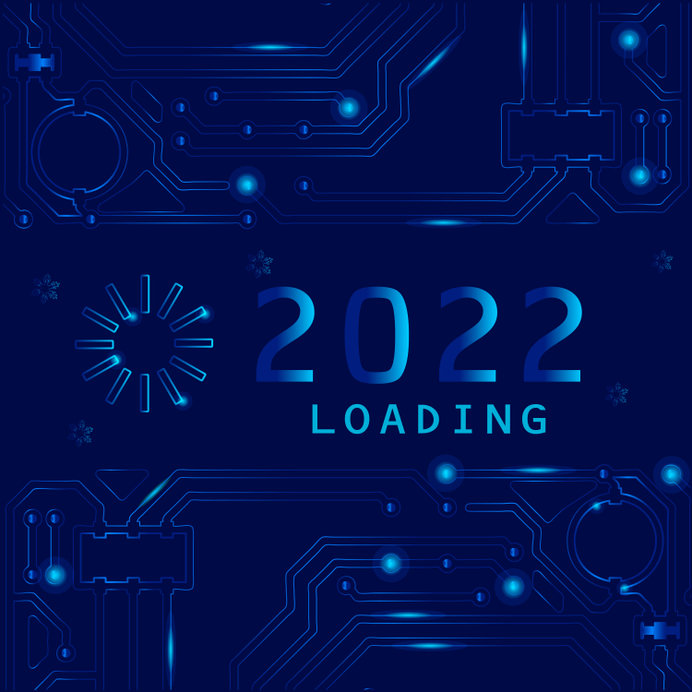The spectacular growth of online shopping and remote working in 2020 and 2021 thanks to the pandemic translated into almost nonchalant acceptance of the idea of home delivery of all manner of goods, meals and even drinks, and the dramatic decline of commuting to an office for work. The significant increased in the need for data and communications to remote locations left enterprises more vulnerable to cyber attacks, while expanding the need for intelligent automation to support local warehousing and distribution of a wider range of goods. This period saw the growth in popularity of cryptocurrencies driving more awareness and acceptance of the use of Distributed Ledger Technology (DLT) in other areas including data communications. As communications service providers (CSPs) look to transform their networks in support of these changing business models, what should they be thinking about in the new year?
CSPs will take advantage of long-term relationships with enterprises and government regulators to provide standardized cybersecurity services
As ever-larger proportions of national economies and critical infrastructure move online and into the cloud, global cybersecurity efforts in 2022 increasingly will be led by national governments through regulation and will be focused on protection against hostile state actors. In parallel, as cyber insurance companies seek to more clearly delineate their policy coverage, expect the insurance industry to encourage enterprises to improve online security postures by offering more attractive premiums to those using the latest security technologies and managed services.
CSPs, with their long-standing relationships with both regulators and enterprises, together with their expertise in wide area networking and access to the cloud, will play a pivotal role in this market shift for the benefit of states and their citizens. Because of the diverse nature of participants in the connected economy, cybersecurity services will rely on standardized interoperability between service providers, enterprises and technology vendors to create robust solutions with minimized security attack surfaces that span multiple service provider domains.
This will require a significant increase in security expertise and training in the ranks of telecom teams, and lead to stiffer competition with well-financed technology vendors also recruiting the increasingly valuable human security resources in the sector. Service providers will more quickly shift to automate and virtualize operations in part to move security functions dynamically to those parts of a service where they are required and are most effective.
The “things” market increasingly will take up CSP mind share as things are seen as “customers” for high-value digital services
Massive growth in IoT and its use in government infrastructure and verticals like Industry 4.0, health and retail, together with increasing 4G, 5G and satellite coverage, will accelerate CSPs’ shift in focus from individual consumers to digital services for things that can initiate autonomous transactions.
This shift accelerates a trend of treating things as self-sovereign identities collecting standardized verifiable credentials to augment and enhance their digital identities to operate effectively and securely throughout their lifecycles and across multiple trust domains. Applying the use of digital identities to things rather than employees will be far less intimidating for many enterprises sensitive to a perception of roboticizing human-based operations. 2022 brings increased awareness of circular economies, where the whole lifecycle of things is managed to minimize carbon footprints, energy consumption and waste, especially at the end of the thing’s lifecycle, and how environmentally sustainable circular economies grow faster using digital identities for things. CSPs that adapt fastest to the treatment of things as autonomous subjects that can carry out transactions will have a distinct competitive advantage in 2022 and beyond.
With hundreds of millions of electric and plug-in vehicles on the road each year with highly complex batteries, the importance of real-time battery health monitoring will become apparent to regulators. Add the growing awareness of recycling batteries to extract valuable minerals like lithium for reuse and minimized impact on the environment. The result will be an understanding that electric vehicle batteries need to autonomously manage their own lifecycle data in the form of digital twins accessible by vehicle manufacturers, fleet managers, service centers and regulatory agencies using scalable decentralized approaches based on DLT/blockchain.
CSPs will increasingly become aware of how essential DLT is to enable new high-value digital services delivered through complex digital supply chains
As digital services and products become increasingly complex and sourced from many different suppliers, CSPs will increasingly need to manage digital supply chains and the reliance on distributed shared ledgers and federated trust between buyers and sellers of services on an automated basis. 2022 will bring to light more use cases that rely on DLT/blockchain and their importance to drive new revenue streams.
These new uses cases will compel CSPs to exchange data in shared ledgers with competitors and partners using DLT, requiring a shift in the usual way of doing business. Mold-breaking approaches emerge within finance, legal and sales departments, beginning with education on shared ledgers using DLT, and how privacy and commercially sensitive data can be safeguarded. Processes and workflows will need restructuring to take advantage of DLT-based opportunities, as they shift away from manual processes for legal and financial engagement with partners. Replacement of traditional enforcement of agreements with standardized software-based smart contracts on decentralized data repositories will require bold incremental progress structured to minimize risk in compelling pilot projects without losing momentum. First movers in 2022 will have a strong advantage.
What seemed unthinkable in December 2019 has become the new normal as we enter 2022. The world adjusted quickly to work from anywhere and home deliveries, as well as digital applications turned on by governments and enterprises almost overnight. This was possible in no small part thanks to CSPs whose networks and data centers around the world were resilient enough to support the massive growth in demand. The frenetic pace of digital innovation in all sectors will not lessen in 2022. CSPs who innovate and transform their networks and services, while maximizing interoperability with partners using standardized APIs and DLT-based techniques, will continue to be central players in the growing connected economy.

